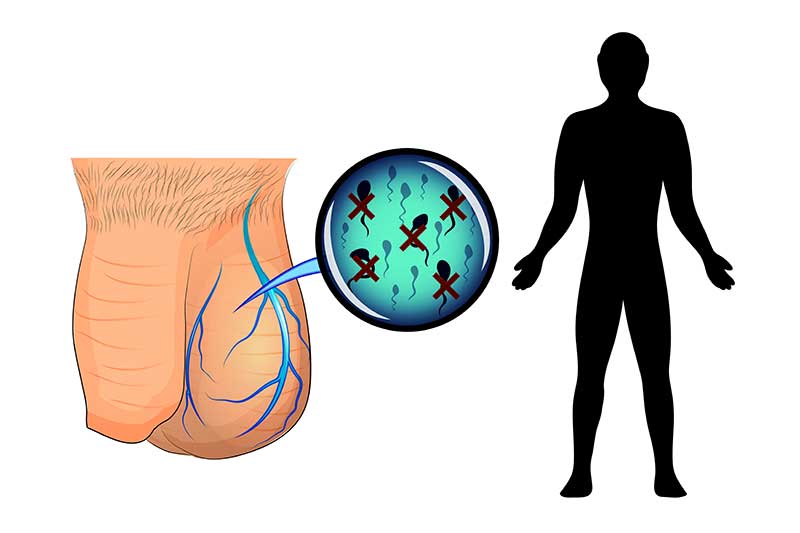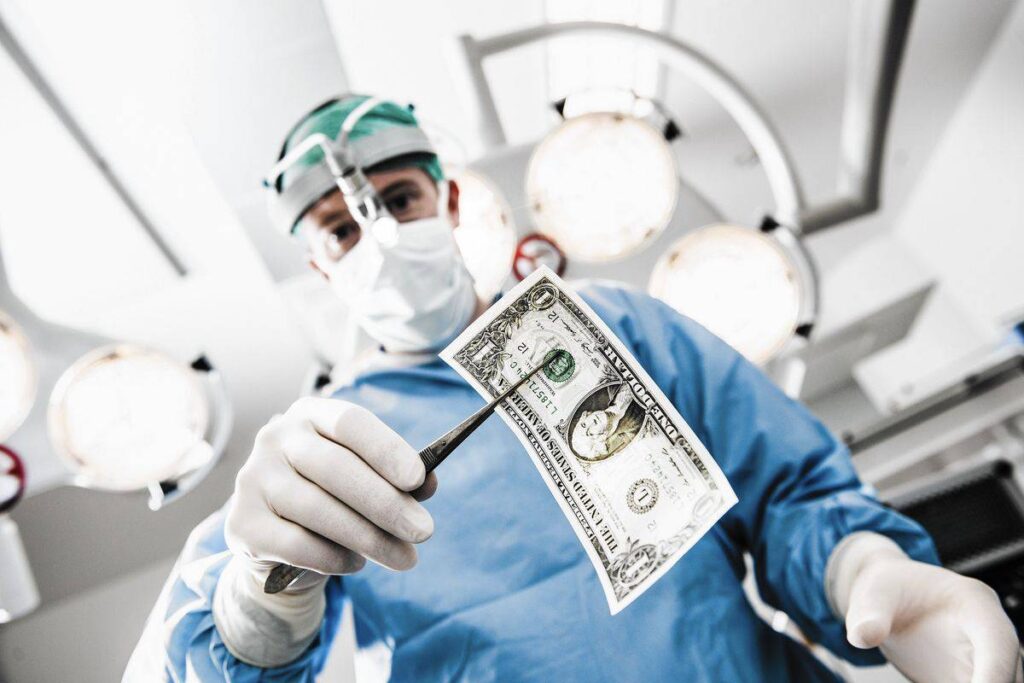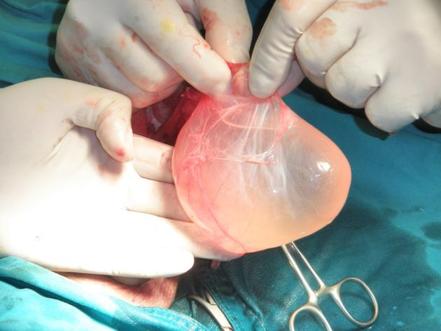What is varicocele disease?
Varicocele refers to the dilation of the veins (blood vessels) of the testicle and the backflow of blood into the testicle. Varicocele is the most common cause of male infertility. About 30% of men with primary and 70% with secondary infertility have varicoceles. Varicocele surgery is usually the only treatment.
Fortunately, specialized clinics nowadays perform varicocele surgery as an outpatient (30 minutes) with minimal rest. Read on for more details.
Cost of varicocele surgery in 2023
The cost of varicocele surgery without insurance in 2023 at a well-equipped center cost:
13 million Tomans for unilateral varicocele and around 20 million Tomans for bilateral varicocele.
Cost of varicocele surgery with laser
There is no laser varicocele surgery since the best method is microscopic. Only a very small incision is made during microscopic surgery. Microscopic varicocele surgery is laser surgery.
Cost of a varicocele ultrasound
The cost of a varicocele ultrasound as a private patient is between 120,000 and 150,000 Tomans.
Best hospital for varicocele surgery
Urologist Dr. Shahriar Nategh performs varicocele surgery at the Day Surgery Center (D Clinic), and no hospital admission is needed. Day surgery centers had superior conditions to hospitals during the Coronavirus pandemic. To make an appointment or consult a doctor, visit the link below.
Varicocele treatment
After your doctor diagnoses varicoceles during the exam, they will order a color Doppler ultrasound of the testicular veins. In addition, they will order a semen analysis test.
If the varicocele is also confirmed in the ultrasound and sperm abnormalities are seen in the sperm analysis, you will be a candidate for surgery.
The best varicocele treatment is microsurgical ligation of defective veins. The urologist uses a surgical microscope to isolate defective veins from other tissues and ligate them.
- It is best to take a bath the day before surgery and shave the surgical area (above the testicle and groin).
- The night before surgery, have a light dinner and fast for 6 to 8 hours before surgery.
Since the surgery time is very short (about 20 to 25 minutes for unilateral cases and 45 minutes for bilateral cases), deep general anesthesia is not required for varicocele surgery. It can be done under deep sedation or local anesthesia.
The patient stays under observation for up to 4 hours after surgery and can then be discharged.
Types of varicocele surgery methods
Risks of untreated varicocele
Varicoceles have 3 degrees (mild, moderate, and severe). Naturally, the more severe the varicocele and the longer it persists, the greater the complications. Below, we review varicocele’s effects on the body:
1-Testicular pain
Since varicocele disrupts the pampiniform plexus veins in the testicle, the backflow of blood into the testicle increases. This causes accumulation of excess blood inside the testicle, congestion, and pain/heaviness in the testicle. Notably, this pain is often mild, and the patient describes it as heaviness in the testicle, especially after physical activity and prolonged standing.
2-Infertility
As mentioned before, varicoceles are the most common cause of male infertility. The backflow of venous blood containing harmful substances, oxygen free radicals, and increased testicular temperature are responsible for impaired sperm production and weak sperm. The most common abnormalities in these individuals are impaired sperm motility and decreased motile sperm.

3-Atrophy and shrinkage of the testicle
The proper temperature for optimal testicular function and sperm production is 33°C to 34°C (3°C to 4°C lower than body temperature). Severe and long-term varicoceles increase testicular temperature, damaging its structure and ultimately causing irreversible atrophy and shrinkage of the testicle.

Varicocele surgery methods
There are three types of varicocele surgery:
A type of open surgery performed under general or local anesthesia. The surgeon usually accesses the area through the groin or rarely through the abdomen or upper thigh. Another surgical procedure is microscopic surgery. This is the preferred method for varicocele surgery due to its high precision and low chance of complications and recurrence (less than 1%).
Using ultrasound and a surgical microscope, the surgeon ligates the damaged veins to establish blood flow through the healthy vessels. Pain after surgery is usually minor, and the patient can return to normal life soon. Today, due to the high precision of microscopic surgery in finding defective veins, less chance of damaging the testicular arteries, fewer post-operative complications, and a shorter recovery period after surgery, the microscopic surgery method is the surgery of choice for varicocele.
Laparoscopic varicocele surgery
The surgeon makes a small incision in the abdomen and inserts a slender surgical instrument into the veins.
Treating varicoceles with subcutaneous sclerotherapy
The radiologists insert a tube or catheter into the body through the neck or groin. Surgical instruments are inserted through this tube, and the surgeon ligates the damaged veins by burning them or using special chemicals.
Varicocele post-op care
Sexual intercourse is not recommended for up to 2 weeks after surgery. The first semen analysis is requested three months after surgery. The success rate in improving sperm after surgery is about 80-75%, and it is best if the patient also receives treatment (sperm-enhancing drugs) after surgery to achieve better results.
After microscopic surgery, the patient can resume normal daily activities after 2 to 3 days. If the work involves strenuous physical activity or lifting heavy objects, it may take 1 to 2 weeks to return to baseline.
After surgery, swelling or bruising may be seen in the groin area or scrotum. Mild groin pain may persist for 3 to 6 weeks. The doctor will also prescribe an athletic protector for two weeks after surgery.
Diet after surgery is like the patient’s normal diet, and there is no need to consume special foods.
The surgical site dressing is usually waterproof, so you can shower and bathe on the day of surgery.
There is no need to change dressings after surgery, and you can remove the dressing three days after varicocele surgery.
The first follow-up visit with a urologist is 1 to 2 weeks after surgery.
Painkillers for varicocele surgery
Common painkillers like ibuprofen or acetaminophen can relieve minor postoperative pain.
Also, three months after surgery, the patient should do a sperm analysis test to evaluate the ability to produce sperm and the quality and quantity of new sperm. The patient is advised to refrain from smoking and keep the testicles cool to increase the effect of surgery and improve sperm quality.
- After recovery, avoid wearing tight underwear
- Avoid prolonged hot baths, saunas, and hot tubs
- Massage the testicles with cold water after each bathroom use
Varicocele surgery with sutures
In the microscopic surgery method, since the surgical incision is very small (around 2 to 3 cm), a few sutures are used (around 2 to 3 sutures). Sutures are usually absorbable and do not need to be removed. The patient is seen 1 to 2 weeks after surgery for follow-up and prescription of medications to improve sperm production and sperm quality.
Improving sperm quality after varicocele surgery
After surgery, your doctor will prescribe pain medication and antibiotics. You will also be prescribed medication to accelerate sperm improvement and create high-quality sperm.
Since one sperm production cycle takes about 70 days, these medications are taken for three months. The first sperm analysis after surgery is requested three months after varicocele surgery.
Soccer, running, and driving after varicocele surgery

If varicocele surgery succeeds, improvement in semen analysis is expected in 80% of cases. The patient should rest for three days after surgery. Then, they can start their normal light activities such as walking, working, or driving.
It is better to postpone more strenuous physical activities or sports like running or soccer for two weeks after surgery. The patient can gradually return to limited activity participation and increase the duration.
Complications after varicocele surgery
🔴 Infection and bleeding
Like any other surgery, there is a risk of surgical wound bleeding and infection. However, due to the minimally invasive nature of this surgery, the risk of infection and bleeding is very low and negligible.
🔴Varicocele surgery site
This is mostly due to surgical manipulation and is usually self-limiting. Using anti-inflammatory medication and ice compressions speeds up recovery. If the swelling or redness from surgery is progressive or accompanied by fever, chills, or other systemic symptoms, consult your doctor.
🔴Hydrocele (scrotal swelling and fluid accumulation around the testicle)
This complication usually occurs when the surgeon mistakenly ligates the lymph vessels and defective veins during surgery. As a result, lymph flow is disrupted at the surgical site, and lymph accumulation occurs. This complication has no medical treatment, and if the resulting hydrocele is large or troublesome, it must be surgically corrected.

🔴Scrotal swelling after varicocele surgery
Bruising of the testicle after varicocele surgery may be due to surgical manipulation, bleeding, infection, or hydrocele formation. If the swelling is self-limiting due to surgical manipulation and is not accompanied by other systemic symptoms (fever and chills), using analgesic and anti-inflammatory medication, ice compression, and elevating the testicles (wearing tight underwear or athletic support after surgery) can help.
If signs of infection occur (fever, chills, local warmth, and redness), your doctor will prescribe appropriate antibiotics.
Varicocele recurrence after surgery
If, during varicocele surgery, the surgeon does not ligate all the non-defective venous branches, there is a risk of recurrence after surgery. It is important to note that the testicular venous system consists of three independent networks (internal spermatic veins, external spermatic veins, and vassal veins). Varicocele refers to dysfunction of the internal spermatic vein network.
Ligating the veins present at the inguinal canal floor during surgery can prevent this complication. It should be noted that the chance of recurrence after successful microscopic surgery is less than 1%.
Interpretation of testicular ultrasound
The video answers your common questions about:
- Definition of infertility
- Interpretation of testicular ultrasound
- Testicular cyst
- Severe hydrocele and infertility
- Testicular shrinkage
- Preparation before semen analysis
- Sperm motility
- Intrauterine sperm injection (IUI)
- Best time for intercourse to get pregnant
- Natural alternative to lubricant gel during attempts to get pregnant
◼No change in varicose vein appearance after surgery
It is very common that even after successful surgery, the vein appearance may not change. It is important to note that vein appearance after surgery is not a measure of surgical success or failure. Instead, the key point is that venous blood no longer refluxes into these defective veins.
Dr. Shahriar Nategh, Urologist and Surgeon

